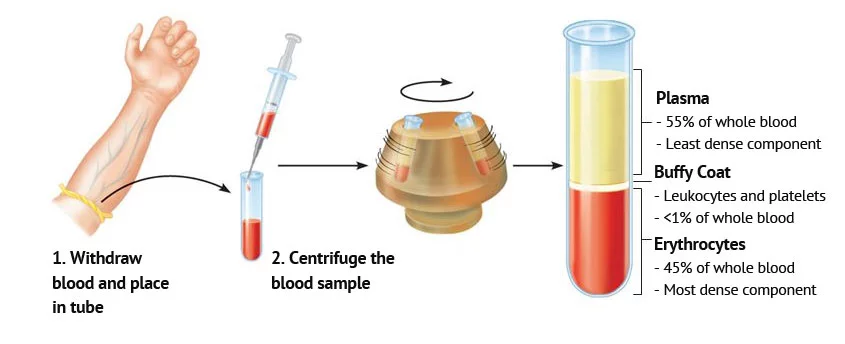Platelet-rich plasma, commonly known as PRP, is a form of blood plasma enriched with platelets, also known as thrombocytes. These blood cells are essential for promoting healing and growth. Injecting PRP into the knee to address joint pain can enhance healing and decrease inflammation, often providing symptom relief for six months or more.

PRP is derived from the patient’s own blood. Initially, a small sample of your blood is drawn and placed into a centrifuge, which spins at high speeds to separate the platelets from the red blood cells. The resulting platelet-rich plasma can then be injected into the knee to alleviate joint pain.
Different methods exist for preparing PRP injections, particularly for treating arthritic joints. These methods focus on extracting a low amount of white blood cells to minimize inflammation, while maximizing the concentration of platelets and growth factors. Lower white blood cell counts, also known as leukocyte-poor PRP, tend to produce less inflammatory response and are more beneficial. Dr. Hu is aware of these distinctions and opts for preparations with fewer white blood cells to achieve more effective pain relief.
When platelets are concentrated in plasma, they can help to promote healing and growth. When PRP is used to treat knee pain in patients, it helps to deliver these platelets and growth factors injected directly to the area that needs them most. PRP injections can help to reduce inflammation and promote healing.
There are many benefits to PRP injections for knee pain. Some of the key benefits include:
Recovery time from a PRP injection is relatively swift compared to other treatments. You can go home right after the procedure, but having someone drive you is advisable due to potential stiffness in the treated area. Mild pain and irritation may occur within the first 24 to 48 hours post-injection.
To accelerate recovery after a PRP injection, doctors typically recommend the following for the initial two days:
– Refrain from any physical activities that stress the injected area.
– Apply ice to the injection site for 20 minutes every two to three hours.
– Avoid nonsteroidal anti-inflammatory drugs, as they can reduce the effectiveness of PRP.
– Pain medications are seldom prescribed after a PRP session since the pain experienced is usually minimal and recovery is quick.
The overall healing period after completing the series of injections lasts about four to six weeks. Around the fifth week, your doctor may suggest physical therapy to support long-term recovery.